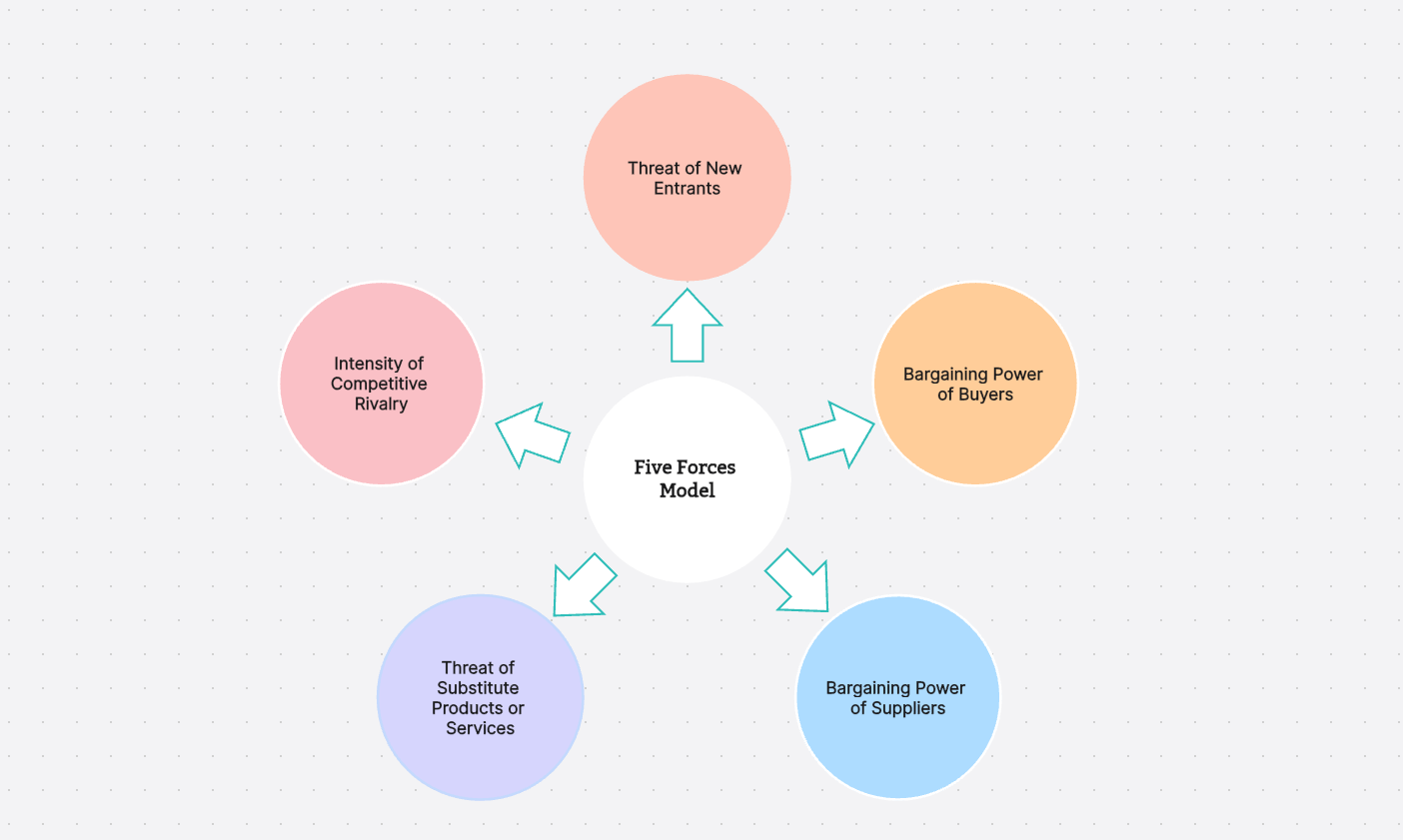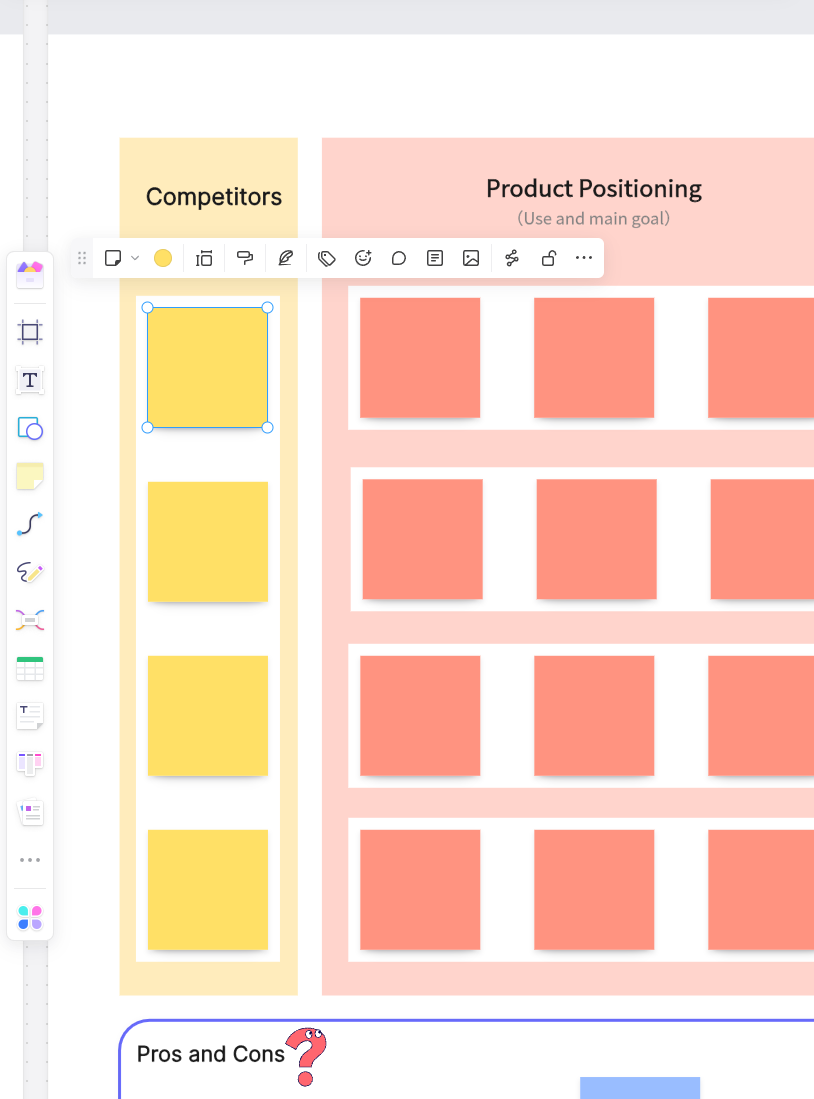In today's dynamic business landscape, understanding your competitors is paramount for achieving sustainable success. A robust competitor analysis framework provides businesses with valuable insights, enabling them to make informed decisions, identify opportunities, and stay ahead of the competition. In this article, we will explore the importance of competitor analysis and present a comprehensive framework to guide businesses in analyzing their competitors effectively.
Part 1. What Is a Competitor Analysis Framework?
A competitor analysis framework is a structured and systematic approach used by businesses to assess and understand the strengths, weaknesses, opportunities, and threats posed by their competitors in the marketplace. It involves the collection, analysis, and interpretation of information about rival companies, helping businesses make informed decisions, refine their strategies, and gain a competitive edge.
Part 2. What Are Key Components of a Competitor Framework?
A robust competitor analysis framework comprises several key components to provide a comprehensive understanding of the competitive landscape. Here are the essential elements:
1. Identification of Competitors:
Direct Competitors: Those offering similar products or services to the same target market.
Indirect Competitors: Those addressing the same customer need through different means.
2. Data Collection:
Publicly Available Information: Annual reports, press releases, websites, and social media provide valuable insights.
Customer Feedback: Analyzing customer reviews and feedback helps understand strengths and weaknesses.
Market Reports: Industry reports and market analyses provide macro-level insights.
3. SWOT Analysis:
Strengths: What advantages do your competitors have? Consider their resources, capabilities, and brand reputation.
Weaknesses: Where do competitors fall short? Identify areas for potential competitive advantage.
Opportunities: What external factors can be leveraged? Look for gaps in the market or emerging trends.
Threats: What challenges do competitors face? Anticipate potential risks and market shifts.
4. Market Positioning:
Price Positioning: Compare pricing strategies to understand where your products stand in the market.
Product Differentiation: Evaluate unique selling propositions and features that distinguish competitors' offerings.
Target Audience: Analyze the demographics and psychographics of the customer base each competitor targets.
5. Competitive Advantage Assessment:
Cost Leadership: Are competitors achieving cost efficiencies?
Product Differentiation: What makes your product stand out?
Focus Strategy: Are competitors focusing on niche markets?
6. Monitoring and Update:
Regular Reviews: Competitor analysis is an ongoing process; update your insights regularly.
Adapt Strategies: Adjust your strategies based on changes in the competitive landscape.
By systematically addressing these components, businesses can develop a holistic understanding of their competitive environment, enabling them to make informed decisions and strategic moves in the marketplace.
Part 3. Benefits of Using a Competitor Analysis Framework
Using a competitor analysis framework provides businesses with a range of benefits, helping them navigate the complexities of the marketplace and make informed strategic decisions. Here are key advantages:
Informed Decision-Making: Gain insights into competitors' strategies, allowing for informed and strategic decision-making in areas such as product development, pricing, and marketing.
Identifying Opportunities: Discover market trends and potential gaps, enabling businesses to identify and capitalize on new opportunities for innovation and growth.
Mitigating Threats: Anticipate and proactively address potential threats by understanding competitors' strengths and strategies, minimizing risks to your business.
Benchmarking Performance: Evaluate your performance against industry standards and competitors, highlighting areas of excellence and opportunities for improvement.
Strategic Planning: Develop effective strategies by leveraging competitor insights, refining market positioning, and enhancing overall competitiveness in the marketplace.
Part 4. 6 Types of Competitor Analysis Framework
There are various types of competitor analysis frameworks that businesses can use to gain insights into the competitive landscape. Here are six common types:
1. SWOT Analysis (Strengths, Weaknesses, Opportunities, Threats):
Purpose: SWOT analysis is a foundational framework that assesses both internal and external factors affecting a business. It identifies internal strengths and weaknesses and external opportunities and threats.
Application: Businesses use SWOT to gain a holistic view of their competitive position and make strategic decisions based on the insights derived from each category.
2. Porter's Five Forces:
Purpose: Developed by Michael Porter, this framework analyzes the competitive forces within an industry to understand the overall attractiveness of that industry.
Five Forces:
- Threat of New Entrants
- Bargaining Power of Buyers
- Bargaining Power of Suppliers
- Threat of Substitute Products or Services
- Intensity of Competitive Rivalry
Application: Businesses use Porter's Five Forces to identify factors influencing competition and adjust their strategies accordingly.
3. Strategic Group Analysis:
Purpose: This framework groups competitors based on similar strategic choices, market positioning, and competitive approaches.
Application: By understanding the strategic groups within an industry, businesses can identify areas of opportunity and potential competitive threats.
4. Benchmarking:
Purpose: Benchmarking involves comparing key performance indicators and processes with those of competitors, industry leaders, or best practices.
Application: Businesses use benchmarking to identify areas for improvement, set performance standards, and gain a competitive edge by learning from successful competitors.
5. Blue Ocean Strategy:
Purpose: Coined by W. Chan Kim and Renée Mauborgne, the Blue Ocean Strategy focuses on creating uncontested market space by exploring new market segments or redefining existing ones.
Application: Businesses use this strategy to differentiate themselves by offering innovative products or services, reducing competition and creating new market demand.
6. Customer Analysis:
Purpose: This framework focuses on understanding competitors from the perspective of customer preferences, needs, and behaviors.
Application: By analyzing competitors' approaches to satisfying customer demands, businesses can tailor their strategies to better meet customer expectations and gain a competitive advantage.
Each competitor analysis framework provides a unique lens through which businesses can assess and understand their competitive environment. Depending on the specific goals and context, businesses may choose one or a combination of these frameworks to inform their strategic decisions.
Part 5. Boardmix – Implement Competitor Analysis Easily
Boardmix is a dynamic online whiteboard solution designed to revolutionize the way you collaborate and brainstorm. With an array of drawing templates, Boardmix allows you to visualize your ideas, strategies, and competitor analysis in real-time. Boardmix offers a unique platform that doesn't require integration with other ecosystems, making it a standalone tool for effective team collaboration.
Key features of Boardmix:
- Real-time Collaboration: Boardmix allows multiple users to work on the same whiteboard simultaneously, fostering real-time collaboration and brainstorming.
- Extensive Drawing Templates: With a wide range of drawing templates, Boardmix enables users to visualize their ideas more effectively.
- User-friendly Interface: The intuitive and easy-to-use interface of Boardmix makes it accessible for everyone, regardless of technical skills.
- Secure Data Protection: Boardmix ensures your data is secure with robust security measures in place, protecting your ideas and information.
- Cross-platform Accessibility: Whether you're using a computer or mobile device, you can access Boardmix anywhere at any time for seamless collaboration.
Conclusion
A well-executed competitor analysis framework is a key driver of success in today's business environment. By systematically evaluating competitors, businesses can capitalize on opportunities, mitigate threats, and position themselves strategically in the market. As markets evolve, a continuous commitment to competitor analysis ensures that businesses remain agile and responsive, paving the way for sustained growth and competitive advantage.
With a tool like Boardmix in hand, your process of competitor process will be simplified a lot. Get the free trial right now!













